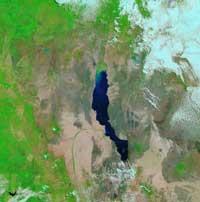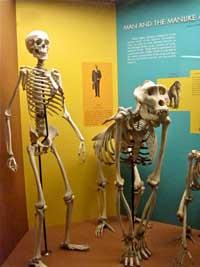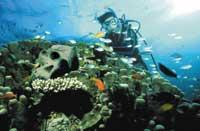Human ancestors lived in the warm savannah
2010/07/04 Aulestiarte Lete, Izaro - Elhuyar Zientziaren Komunikazioa

So far, in the Pliocene and Pleistocene, significant stages in the evolution of the hominids, it was considered that East Africa was a wooded and relatively fresh area, with climatic conditions less harsh than the current ones. But this idea has been challenged by an investigation by the California Institute of Technology, Caltech. Proceeding from the National Academy of Science.
According to the researchers, the Turcana basin has been, at least in the last four million years, a very warm savannah area, “for three million years to the present day, when the global climate became colder.” The temperature of these lands ranged between 30-35 degrees and sometimes higher. “The information is important. Knowing that there have been found remains of the first species of hominid before the human being, we know that, despite its hardness, our ancestors could evolve in that environment. They had to adapt to these conditions”, summary.

The environment of Lake Turkana in Kenya, in a satellite image. (Photo: NASA ) .
The environment of Lake Turkana remains one of the warmest spots in the world. With few forests, the sunlight goes directly to the earth. But the area that had not been clarified long ago was colder than the current one and, in that case, they did not even have clear reason. “One reason may be that the air is cooler — they have determined it — but a second option might be that there are more forests to make shade.” There is no doubt that the savanna has been warm.
For this purpose, the concentration of isotopes in carbonate ions has been measured. Specifically, isotopes carbon-13 and oxygen-18 have been analysed. The accumulation of these isotopes that are part of the underground minerals depends on the temperature: with the heat the concentration is less than with the cold.
According to the researchers, “if you are able to measure isotope concentration, you get a thermometer to measure the earth’s temperature. And with this information you can also learn a lot about the terrestrial environment.” And the temperature of the earth not only allowed the air temperature, but you can also know if there were trees or plants to make shade.
Advantages to evolve
The new current data can give some light to the hypotheses about the origin of the hominid feet.

Among other things, scientists believe that when walking on two legs and standing they achieved an evolutionary advantage. They have explained that in this position they suffered less heat. (Photo: ellenm1/thedesignspace.net) .
Anthropologists have often suggested that bipedalism and other exclusive characteristics of the human being could be beneficial advantages for living and evolving in hot savannah environments. The research of Caltech members could reinforce this theory, not only by the thermal factor, but also by its relationship.
Under conditions of high solar radiation, it is believed that the “charge” of sunlight could be lighter in two legs and standing. In this posture, the organism receives less radiation than the primates that move on four legs. In addition, the farther away from the ground, the lower the heat of the radiation coming from it.
Body hair loss and the ability to regulate temperature through sweat can be an example of other positive adaptations developed to survive in warm climates.
Published in 7K.

Gai honi buruzko eduki gehiago
Elhuyarrek garatutako teknologia





